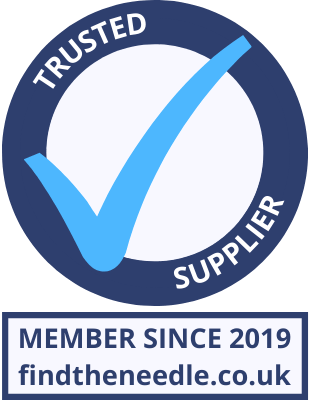 Add My Company
Add My Company
Sign In
A guide to transporting hazardous chemicals
21-07-2020

Transporting chemicals is a key task that many companies with an industrial focus need to complete safely, on a regular basis.
Transporting hazardous chemicals is a task that needs to be completed by following stringent laws and regulations, which are in place to keep the process health and safety compliant.
To transport hazardous chemicals safely and to avoid accidents, you need to be aware of the best ways of transporting potentially dangerous substances, and which regulations you should be following.
In this article, we take a look at what you need to know about transporting chemicals safely.
HOW SHOULD YOU TRANSPORT CHEMICALS?
Transporting chemicals needs to be done in a safe, secure and controlled manner. Accidents and spillages are potentially life threatening when it comes to hazardous chemicals, so it’s crucial to know that you’re storing or transporting dangerous chemicals in an appropriate container.
Industrial containers are available in a wide range of sizes offering different storage capacities, and in a variety of materials, the most popular being plastic or steel.
Here are the most common types of containers that can be used to safely transport hazardous chemicals:
Plastic drums
Intermediate bulk containers (IBCs)
Steel drums
The type of container you choose will depend on the nature of the chemicals you’re transporting and their quantity.
For instance, if you are transporting large quantities of hazardous chemicals, a large IBC with a steel cage will be more convenient than a small plastic barrel. If you’re transporting chemicals in small quantities, plastic barrels will prove to be a cheaper and more efficient option.
Different containers have different openings, such as an open head or a tight head plastic drum. You will need to consider which style of opening best suits the materials you are transporting. Tight head containers are more secure, so are often a good option for minimising the risk of spillages.
To further protect containers and the chemicals you’re transporting, invest in separate drum liners to act as a shield between the container and the chemicals within.
UN APPROVED
The most important thing to check when transporting chemicals is that the container you’re using is UN approved.
A UN approval rating is an international standard that certifies the container can safely be used to store hazardous chemicals.
Most steel drums and plastic drums are UN approved, whereas cardboard or fibre packaging isn’t (and is therefore unsuitable for storing and transporting hazardous chemicals).
If your container isn’t UN approved, don’t attempt to store or transport hazardous chemicals or any other form of dangerous, corrosive, or flammable substances inside it.
PRECAUTIONS TO TAKE WHEN TRANSPORTING CHEMICALS
When you’re transporting chemicals, there are several important precautions you need to take before you begin the operation.
The first precaution is to check that you are using suitable containers and that they’re UN approved. In addition, you should carry out a health and safety check of the containers.
This means that you need to quality check the containers, looking for potential leaks, damage to the lids or seals, or any large dents that could be a sign of excess wear and tear.
You also need to check that there will be no cross-contamination. If the container is being reused, ensure that it’s been adequately cleaned and decontaminated from the previous chemicals stored within.
RISK ASSESSMENTS
We also recommend carrying out a detailed risk assessment. You need to be sure that you are transporting chemicals in the safest manner possible. A qualified professional or member of staff should carry out the risk assessment.
You need to ensure the following, at a minimum:
The container is appropriate and UN approved.
Containers are not damaged.
Containers are appropriately labelled.
Staff have adequate protective equipment when handling hazardous chemicals.
Staff have adequate qualifications and health and safety knowledge to complete the transportation process.
The chemicals are being transported in a safe and legal way (i.e. check that you are legally allowed to transport the chemicals by road).
Emergency procedures are in place, should an accident occur.
The risk assessment should highlight any areas of potential danger and have these areas minimised before transport of the dangerous chemicals begins. In the event of accidents (for example, a car crash), the risk assessment should also outline the immediate procedures that need to be put into place to minimise harm.
WHAT GUIDELINES OR REGULATIONS DO I NEED TO FOLLOW?
To safely and legally transport hazardous chemicals, you need to follow particular government regulations.
Throughout the transportation process, you should adhere to COSHH guidelines (Control of Substances Hazardous to Health). These can form part of your risk assessment. Importantly, COSHH procedures require you to keep your containers labelled using international symbols. This allows anyone to quickly know what’s inside and whether it’s dangerous.
Dangerous substances and goods also need to be accompanied by the correct documentation when they are being transported. These documents state what is being transported.
Finally, your business must have a qualified DGSA (dangerous goods safety adviser) in order to be legally allowed to carry out the transport of hazardous chemicals. The appointed person must have adequate knowledge of health and safety practices, and must prove this by passing an examination, leading to a qualification.
It’s always important to follow guidelines and regulations, because failure to do so has legal consequences as well as health and safety consequences.
CONTACT ITP PACKAGING TODAY
ITP Packaging offers a wide range of transportation options for hazardous chemicals, from plastic drums to IBCs, all of which are suitable for industrial use. Our friendly team is here to help you make the best purchase for your transportation needs.
For more information on transporting hazardous chemicals, then please telephone 0333 987 4565 email sales@itppackaging.com, or complete our online contact form, and we will be in touch as soon as possible.
For more information on A guide to transporting hazardous chemicals talk to ITP Packaging Ltd
Enquire Now
List your company on FindTheNeedle.

